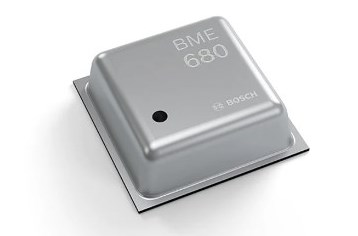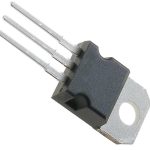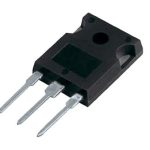In the world of environmental sensing, Bosch’s BME680 sensor stands out as a remarkable device that offers a wide range of capabilities. From monitoring air quality to measuring temperature, humidity, and pressure, the BME680 is a versatile sensor that empowers engineers and researchers to gather valuable data for various applications.
With its advanced features and precise measurements, the BME680 has become a go-to solution for environmental monitoring, weather stations, smart homes, and industrial IoT applications. In this article, we will delve into the intricacies of the BME680 sensor, exploring its features, comparing it with other sensors, understanding its pinout and interface, and examining its applications.
Importance of environmental sensors in modern technology
In today’s world, where environmental concerns are at the forefront, the need for accurate and reliable environmental monitoring has never been greater. Environmental sensors play a crucial role in gathering data about the surrounding environment, enabling us to make informed decisions and take necessary actions.
From assessing air quality to optimizing energy consumption, environmental sensors provide valuable insights that drive advancements in various sectors, including smart homes, industrial automation, and healthcare. By monitoring parameters such as temperature, humidity, pressure, and volatile organic compounds (VOCs), these sensors contribute to creating healthier, safer, and more sustainable environments.
Bosch BME680: The All-in-One Sensing Solution

Bosch, a renowned name in the field of technology and engineering, has established itself as a leading manufacturer of innovative and reliable electronic components. With a rich history spanning over a century, Bosch has consistently delivered cutting-edge solutions that have revolutionized various industries.
The Bosch BME680 sensor is a testament to their commitment to excellence and their expertise in sensor technology. As a trusted brand, Bosch ensures that their products meet the highest standards of quality, accuracy, and performance.
Benefits of using BME680 in various industries and applications
- One of the key advantages of the BME680 is its ability to measure multiple parameters simultaneously, providing a holistic view of the environment.
- Moreover, the BME680 boasts exceptional accuracy and stability, ensuring reliable measurements over extended periods.
- The versatility of the BME680 sensor extends to its wide operating range, allowing it to perform optimally in diverse environments.
- Furthermore, the BME680 sensor is designed with integration in mind, offering various communication interfaces and compatibility with different microcontrollers and development platforms.
Exploring BME680 Datasheet

To gain a deeper understanding of this sensor, it is essential to explore its datasheet and examine its technical specifications. The datasheet provides valuable information on the device’s performance characteristics, enabling engineers and designers to make informed decisions when incorporating the BME680 into their projects.
In the BME680 datasheet, you will find detailed information about the sensor’s technical specifications. This includes its measurement ranges, accuracy, resolution, and response times. For example, the temperature measurement range of the BME680 is typically -40 °C to 85 °C, with an accuracy of ±0.5 °C. The humidity measurement range is typically 0% to 100%, with an accuracy of ±3%.
Operating conditions and limitations are also outlined in the BME680 datasheet. It provides details about the recommended supply voltage and current, as well as the operating temperature and humidity ranges. These specifications help ensure the proper functioning of the sensor within its specified limits.
BME680 Pinout and Configuration
The BME680 sensor features a specific pinout configuration that determines the connections required for proper operation. Understanding the pin functions is crucial for correct wiring and integration into electronic circuits. The datasheet provides a comprehensive overview of the pin descriptions, including power supply pins, communication interface pins, and measurement output pins.
Pinout configuration for different use cases can vary depending on the specific requirements of your project. The datasheet offers guidance on various pin configurations, such as I2C and SPI interfaces, which are commonly used for communicating with the BME680. Additionally, it provides information on the necessary external components, such as pull-up resistors, to ensure proper communication and stability.
When working with the BME680, proper wiring and circuit design are essential for accurate and reliable measurements. The datasheet offers valuable tips and recommendations for wiring the sensor, including guidelines for minimizing noise and optimizing signal integrity. It may also provide example schematics or reference designs to assist engineers in implementing the BME680 into their circuits effectively.
Comparison: BME280 vs. BME680
The BME680 stands out with its additional gas sensor capability, allowing it to detect volatile organic compounds (VOCs) and estimate indoor air quality. This makes it a more versatile sensor for applications where air quality monitoring is important, such as in smart homes or HVAC systems. On the other hand, the BME280 lacks this gas sensor capability and focuses solely on measuring temperature, humidity, and barometric pressure.
In terms of performance and specifications, the BME680 has a lower temperature measurement range compared to the BME280. The BME680 can measure temperatures from -40 °C to 85 °C, while the BME280 has a wider range of -40 °C to 85 °C. However, the BME680 compensates for this with its gas sensor feature, which provides additional value and functionality.
Choosing the right sensor for specific applications
When choosing the right sensor for specific applications, it is significant to consider the specific requirements and priorities of the project.
- If air quality monitoring is a key aspect, the BME680 would be the logical choice due to its gas sensor capability.
- However, if the focus is solely on measuring temperature, humidity, and barometric pressure, the BME280 might be more suitable.
It is crucial to evaluate the project’s needs and select the sensor that aligns best with its objectives.
Comparison: BME680 vs. BME688
The BME680 and BME688 sensors share many similarities in terms of their core functionalities, including temperature, humidity, and pressure measurements.
Analysis of differences in features, accuracy, and performance
However, the BME688 offers more advanced features, such as a higher gas sensor resolution and the ability to measure multiple gases, including CO2 and TVOC (total volatile organic compounds). These enhanced capabilities make the BME688 more suitable for applications where detailed air quality analysis is required, such as in smart buildings or environmental monitoring systems.
In terms of accuracy, the BME688 generally outperforms the BME680. The BME688 has a higher temperature measurement accuracy of ±0.5 °C compared to the ±1.0 °C accuracy of the BME680. Additionally, the BME688 also provides improved humidity measurement accuracy with a tolerance of ±2% compared to ±3% of the BME680. These accuracy differentials can be crucial in applications that require precise environmental measurements.
When it comes to performance, both sensors offer reliable and consistent readings. However, the BME688 has a faster response time, allowing for more real-time monitoring and analysis. This attribute can be advantageous in applications that demand rapid data updates or require quick adjustments based on environmental changes.
Conclusion
The Bosch BME680 sensor has emerged as a powerful tool in the field of environmental sensing. Its ability to measure multiple parameters, including temperature, humidity, pressure, and volatile organic compounds (VOCs), makes it a valuable asset for a wide range of applications. Whether it’s monitoring air quality in smart homes, optimizing HVAC systems, or enabling weather forecasting, the BME680 sensor provides accurate and reliable data.



